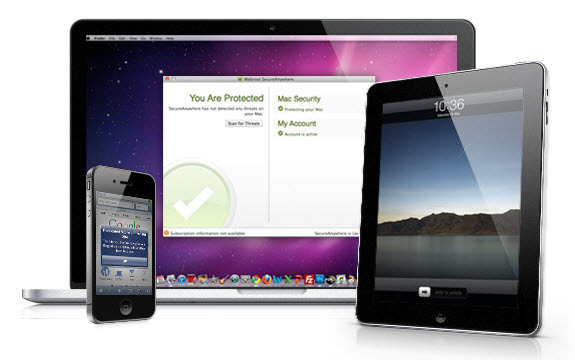Webroot offers complete protection from viruses and identity theft for all your devices - without slowing you down. Powerful, lightweight, and integrated protection for PC, Mac, and Android, Webroot Internet Security Complete with antivirus protects personal information by blocking the latest malware, phishing, and cyber-attacks.
Webroot Mac Review
For Home and Home Office
Click hereto reach the Webroot SecureAnywhere installer for your Mac, and click the Download Nowbutton to begin the installation process. Next, in the bottom right corner of your screen, or in your downloads folder, select the wsamac.dmgfile. Double-click the the Webroot SecureAnywhereicon to launch the installer. System Requirements for Mac. The following describes the system requirements for using SecureAnywhere functionality on Mac devices. Operating System. MacOS 10.12 (Sierra®). 385 Interlocken Crescent Suite 800. Broomfield, CO 80021. PRODUCT INFORMATION. Managing Detected Threats. If SecureAnywhere detects a threat or suspicious file, it prompts you to manage the item. Follow this procedure on how to manage any threats to your system.
Webroot SecureAnywhere® AntiVirus
Webroot SecureAnywhere Internet Security Plus
Webroot SecureAnywhere Internet Security Complete
Webroot WiFi Security VPN
Webroot Mobile Security
Windows® 7 32- and 64-bit (all Editions), Windows 7 SP1 32- and 64-bit (all Editions)
Windows 8 32- and 64-bit
Windows 8.1 32- and 64-bit
Windows 10 32- and 64-bit
Chrome OS™ operating system
For more information click here.
macOS 10.13 (High Sierra®)
macOS 10.14 (Mojave®)
macOS 10.15 (Catalina®)
macOS 11 (Big Sur®) with Apple M1 ARM or Intel® processors
For more information click here.
Intel® Pentium®/Celeron® family, or AMD®K6/Athlon™/Duron™ family, or other compatible processor
128 MB RAM (minimum)
10 MB Hard Disk Space
Internet access
Google Chrome® 11 and newer
Internet Explorer® version 11 and newer (Windows XP IE8)
Microsoft Edge® (partial support)
Mozilla® Firefox® version 3.6 and newer
Safari 5 and newer
Opera 11 and newer
Android™ Mobile Security:
Webroot Mac
Android™ operating system version 6 (Marshmallow) or higher
Android™-compatible device with at least 97mb of free storage space
Security for iPhone®
Webroot Mobile Security requires iOS® 12 or higher
Computer Requirements:
OS X 10.10 (Yosemite®) and newer
Windows 7 32- and 64-bit and newer (excluding Windows 8 and Windows 10 S)
Mobile Requirements:
Android™ operating system version 6 and newer
iOS® 10 and newer
For Business
Webroot Business Endpoint Protection
Webroot DNS Protection
Webroot Security Awareness Training
Windows® 7 32- and 64-bit (all Editions), Windows 7 SP1 32- and 64-bit (all Editions)
Windows 8 32- and 64-bit
Windows 8.1 32- and 64-bit
Webroot Mac Review
Windows 10 32- and 64-bit
Webroot Mac Cleanup Software
macOS 10.13 (High Sierra®)
macOS 10.14 (Mojave®)
macOS 10.15 (Catalina®)
macOS 11 (Big Sur®) with Apple M1 ARM or Intel® processors
Windows Server® 2012 R2 Standard, R2 Essentials
Windows Server 2008 R2 Foundation, Standard, Enterprise
Windows Server 2003** Standard, Enterprise, 32 and 64-bit (must support SHA-2)
Windows Small Business Server 2008, 2011, 2012
Windows Server 2003** R2 for Embedded Systems
Windows Embedded Standard 2009 SP2
Windows XP Embedded SP1, Embedded Standard 2009 SP3
Windows Embedded for POS Version 1.0
Windows Server® 2016 Standard, Enterprise and Datacentre
Windows Server® 2019 Standard Server with Desktop Experience
Windows Server® 2019 Datacenter Server with Desktop Experience
**must support SHA-2
VMware® vSphere® 5.5 and older (ESX®/ESXi 5.5 and older), Workstation 9.0 and older, Server 2.0 and older
Citrix® XenDesktop® 5, XenServer® 5.6 and older, XenApp® 6.5 and older
Microsoft® Hyper-V® Server 2016
Microsoft® Hyper-V® Server 2012, 2012 R2
Microsoft® Hyper-V® Server 2008, 2008 R2
Virtual Box
Google Chrome® 11 and newer
Internet Explorer® version 11 and newer (Windows XP IE8)
Microsoft Edge® (partial support)
Mozilla Firefox® version 3.6 and newer
Safari 5 and newer
Opera 11 and newer
Any third-party software that doesn't install by drag-and-drop into the Applications folder, and uninstall by drag-and-drop to the Trash, is a system modification.
Whenever you remove system modifications, they must be removed completely, and the only way to do that is to use the uninstallation tool, if any, provided by the developers, or to follow their instructions. If the software has been incompletely removed, you may have to re-download or even reinstall it in order to finish the job.

Here are some general guidelines. Suppose you want to remove something called “BrickYourMac.” First, consult the product's Help menu, if there is one, for instructions. Finding none there, look on the developer's website, say www.brickyourmac.com. (That may not be the actual name of the site; if necessary, search the Web for the product name.) If you don’t find anything on the website or in your search, contact the developer. While you're waiting for a response, download BrickYourMac.dmg and open it. There may be an application in there such as “Uninstall BrickYourMac.” If not, open “BrickYourMac.pkg” and look for an Uninstall button.
You may have to log out or reboot in order to complete an uninstallation.
If you can’t remove software in any other way, you’ll have to erase your boot volume and perform a clean reinstallation of OS X. Never install any third-party software unless you're sure you know how to uninstall it; otherwise you may create problems that are very hard to solve.
Trying to remove complex system modifications by hunting for files by name often will not work and may make the problem worse. The same goes for 'utilities' that purport to remove software.
Aug 27, 2013 12:48 PM
